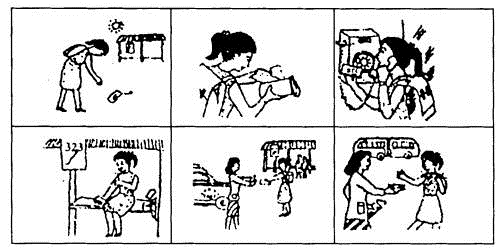题目内容
In Britain, many theatres put on shows for children at Christmas and many theatres have a theatre-in-education team working there. This team, made up of actors and teachers, writes plays for children, usually performing them in schools. They do different plays for different age groups and the children often take part in the play in some way.
Pantomime is a special kind of Christmas show for children. It is loved by people and also allows the audience (观众) to join in. “Pantomime” was the name of the Roman actor who performed shows without speaking — this is where the English word “mime” comes from.
A pantomime is always based on a well-known children's story. But there are always certain types of characters in the show and certain situations and events. For example, a pantomime must always include a hero, known as the “principal boy” and this principal boy is always played by a pretty girl wearing a short costume (服装). Then there is the comic older woman, known as the “dame” who is played by a man. There is always a group of men and women who sing and dance and often there is a pantomime horse. The horse is played by two men who form the “front” and “back” ends inside a “horse” costume. It is funny and it usually kicks the dame when she isn't looking.
Members of the audience have to shout a warning to one of the characters and argue with the character (usually the dame) when she does not believe them. When she shouts, “Oh no, it isn't,” the audience always responds with “Oh yes, it is!” The audience also learns and sings a simple song and a few children are sometimes invited to help one of the characters during the show.
1.The theatre-in-education teams _____.
A. are made up of famous local actors
B. write plays for the same age group
C. often give plays in their own theatres
D. usually allow children to join in a play
2.According to the text, a pantomime _____.
A. is designed to make people laugh
B. is made up of three characters
C. is especially popular with grown-ups
D. can be watched all year round in Britain
3.When the dame says, “Yes, it is”, the audience should _____.
A. follow her and sing
B. stand up and dance
C. repeat what she says
D. disagree with her loudly


